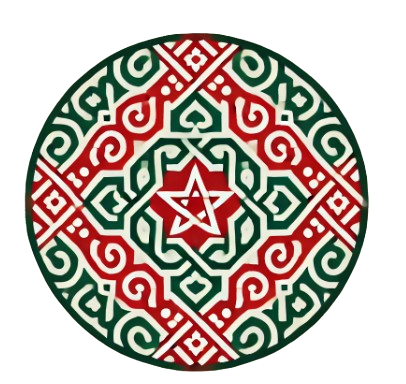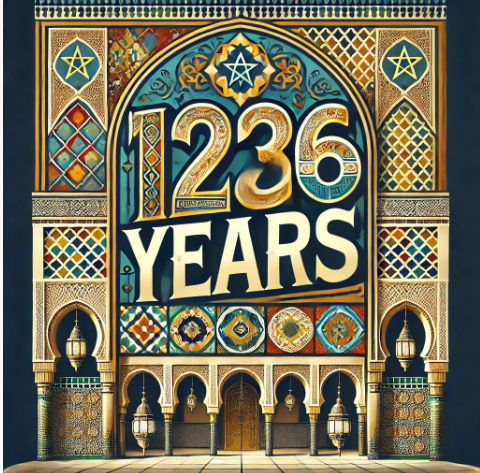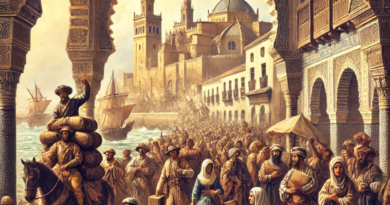When Did Morocco Become a Country?
Morocco, a land of diverse cultures and a rich historical tapestry, has a unique story of nationhood that stretches back through millennia. While modern notions of statehood date to specific legal events and political milestones, Morocco’s identity as a distinct country can be traced through its ancient origins, the establishment of ruling dynasties, and its emergence as an independent modern state.
Ancient Foundations
The roots of Moroccan civilization reach deep into prehistory. The region was inhabited as early as 300,000 years ago, as evidenced by the discovery of Homo sapiens remains in Jebel Irhoud. By the 12th century BCE, Phoenician traders established trading posts along the Atlantic coast, including the famed settlement of Lixus.
As part of the Carthaginian and later Roman Empires, Morocco became a crossroads of Mediterranean cultures. After the decline of Rome in the 5th century CE, Berber (Amazigh) kingdoms emerged as independent entities, forming the backbone of the region’s cultural and political identity.
Islamic Era and the Birth of Moroccan Statehood
Morocco’s history as a unified political entity began with the arrival of Islam in the 7th century CE. In 788 CE, Idris I, a descendant of the Prophet Muhammad, founded the Idrisid Dynasty, establishing the first Muslim state in Morocco and laying the foundation for its future identity.
Over the centuries, Morocco was shaped by successive dynasties, including the Almoravids, Almohads, Marinids, and Saadians. Each dynasty contributed to the development of Morocco as a distinct entity with a centralized government, strong military traditions, and flourishing trade networks. The establishment of Fez, Marrakech, and Meknes as imperial cities further cemented its cultural and political significance.
The Alaouite Dynasty
The current Moroccan state traces its continuity to the Alaouite Dynasty, which came to power in 1666. This dynasty established Morocco’s territorial integrity and maintained its independence even as neighboring regions fell under Ottoman control. The Alaouites strengthened Morocco’s identity as a sovereign state and a global trading partner, interacting with European powers while safeguarding Islamic and Amazigh traditions.
Colonial Period and the Struggle for Independence
In the 19th and early 20th centuries, European colonial powers, particularly France and Spain, sought to expand their influence in North Africa. By the early 1900s, Morocco faced increasing pressure from these powers, culminating in the Treaty of Fez in 1912. This treaty established a French Protectorate over much of Morocco, while Spain controlled the northern and southern regions.
Despite this colonial dominance, Morocco retained its identity as a nation under the leadership of the Alaouite monarchy. King Mohammed V became a symbol of resistance and unity during the struggle for independence, rallying the Moroccan people around the cause of sovereignty.
Independence and Modern Statehood
Morocco officially regained its independence on March 2, 1956, when the French Protectorate ended. Shortly afterward, Spain relinquished control over its zones in Morocco. Mohammed V played a crucial role in the transition, consolidating the country’s political institutions and reaffirming its cultural and historical unity.
Since independence, Morocco has grown into a modern nation-state with a constitutional monarchy. Its legal framework and international recognition define it as the Kingdom of Morocco, with Rabat as its capital and King Mohammed VI as its current monarch.
A Legacy of Continuity and Identity
While modern Morocco’s independence dates to the mid-20th century, its history as a distinct nation stretches back over a millennium. The interplay of Berber, Arab, Islamic, and Mediterranean influences has forged a unique identity that transcends borders and time. Whether viewed through the lens of ancient civilizations, dynastic legacies, or its fight for modern sovereignty, Morocco’s journey to becoming a country is a testament to its resilience and cultural richness.
Morocco’s oldest known dynasty is the Idrisid Dynasty, which was established in 788 CE by Idris I. The dynasty marked the beginning of Morocco as a unified and independent Islamic state.
The Origins of the Idrisid Dynasty
Idris I, a descendant of the Prophet Muhammad, fled the Abbasid Caliphate after the Battle of Fakhkh in 786 CE. He sought refuge in the remote and mountainous regions of northern Morocco, where he was welcomed by local Berber tribes. Recognizing his lineage and leadership qualities, these tribes declared him their ruler, uniting under his leadership to form a nascent state.
The city of Volubilis (Walili) became the dynasty’s first capital. Idris I began laying the foundations of Morocco’s Islamic identity, spreading Islam among the Berber tribes and establishing governance based on Islamic principles.
The Legacy of the Idrisid Dynasty
- After the assassination of Idris I by Abbasid agents, his son, Idris II, succeeded him in 791 CE. Idris II expanded and consolidated the state, founding the city of Fez in 808 CE, which would become a cultural and religious center of the Islamic world.
- The Idrisid Dynasty introduced Islam as a unifying force in Morocco and established many of the social and cultural traditions that define Moroccan identity to this day.

Although the dynasty declined in the 10th century due to internal divisions and external pressures, its legacy as Morocco’s first Islamic dynasty remains a cornerstone of the nation’s history. The Idrisid Dynasty laid the groundwork for future dynasties, shaping Morocco’s political and religious foundations.
The city of Fez has played a pivotal role in Morocco’s history, serving as a cultural, religious, and political hub for centuries. Founded in the early 9th century, Fez became one of the most important cities in the Islamic world, a beacon of knowledge, and a symbol of Morocco’s rich and diverse heritage.
1. Founding and Early Growth
Fez was founded in 789 CE by Idris I, the first ruler of the Idrisid Dynasty. His son, Idris II, expanded the city in 808 CE, transforming it into a thriving capital for the young Islamic state. Fez was strategically located at the crossroads of trade routes connecting the Mediterranean, the Sahara, and the Atlantic, making it a vital economic and cultural center.
2. A Center of Islamic Scholarship
Fez became synonymous with learning and intellectual growth during the medieval period. The city is home to the University of al-Qarawiyyin, founded in 859 CE, which is considered the world’s oldest continually operating university. The institution attracted scholars, scientists, and theologians from across the Islamic world and beyond, solidifying Fez’s reputation as a center of knowledge.
The city’s vibrant intellectual culture also fostered advancements in various disciplines, including philosophy, astronomy, mathematics, and medicine. Fez’s libraries and madrasas (Islamic schools) became repositories of knowledge that influenced the broader Islamic and Mediterranean worlds.
3. Religious Importance
Fez has long been regarded as the spiritual heart of Morocco. It served as a focal point for the spread of Islam in the Maghreb and hosted numerous mosques, shrines, and religious institutions. The al-Qarawiyyin Mosque, alongside its university, became a place of pilgrimage for both scholars and devout Muslims.
Throughout history, Fez played a role in fostering religious unity, integrating Berber and Arab communities under a shared Islamic identity.
4. Political Role
Fez served as the capital of Morocco at various points in its history under different dynasties, including the Idrisids, Marinids, and Alaouites. Its political significance lay not only in its administrative role but also in its ability to serve as a unifying symbol for the nation.
During the Marinid Dynasty (13th–15th centuries), Fez reached its zenith, with rulers investing heavily in its infrastructure, including the construction of madrasas, palaces, and fortified walls. The Marinid rulers solidified Fez’s status as a political and cultural capital, reinforcing its influence across North Africa.
5. Economic Hub
Fez thrived as a center of trade and craftsmanship. The city’s skilled artisans produced textiles, leather goods, pottery, and metalwork that were highly sought after across the Islamic world and Europe. Fez’s souks (markets) were bustling with activity, connecting local producers with international trade networks.
6. Preserver of Moroccan Identity
Even as the political center of Morocco shifted to other cities like Marrakech and Rabat, Fez remained a symbol of Moroccan identity. Its architecture, including the narrow winding streets of the Fez Medina (Fes el-Bali), reflects the city’s historical significance and is now recognized as a UNESCO World Heritage Site.
Fez in Modern Times
Today, Fez continues to be celebrated for its historical and cultural legacy. It stands as a testament to Morocco’s enduring traditions, attracting visitors from around the world who seek to experience its vibrant markets, stunning architecture, and scholarly heritage.
Fez’s role in shaping Morocco’s identity as a crossroads of cultures and as a guardian of Islamic and intellectual traditions underscores its unparalleled importance in Moroccan history.



